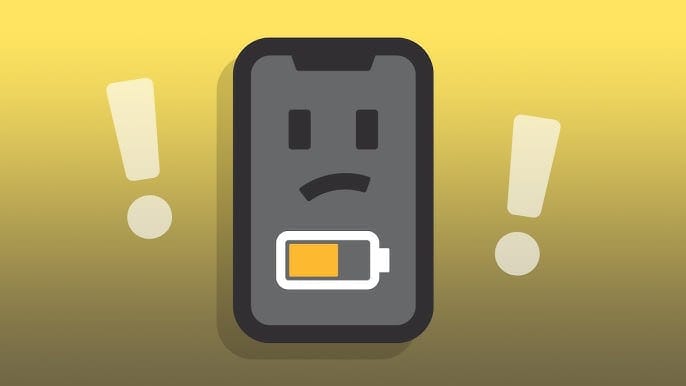Why My Apple Watch Pace Is Off During Runs: How Low Power Mode Distorts Accuracy
If your Apple Watch (or paired iPhone) is low on battery or in Low Power Mode, your pace, splits, distance and heart-rate metrics can be effected. This FAQ explains how, why, and what you can do about it.

Many runners see a pattern: their actual pace feels sharp, but the watch reports a smoothed, lagged pace or omits a faster pace. Few online resources clearly tie this to battery constraints. This post addresses all relevant search queries: “watch pace wrong,” “battery mode GPS error,” “low battery running metrics,” “Apple Watch inaccurate when battery low,” etc. Below is a structured FAQ + technical explanation + mitigation strategy.
FAQ & Technical Explanation
1. Will Low Power Mode on my Apple Watch affect GPS or pace tracking?
- The standard Low Power Mode disables background sensors (background heart rate, SpO₂, notifications, Always-On display), but Apple claims GPS & heart rate during workouts remain unaffected unless you enable the “Fewer GPS & Heart Rate Readings” option.
- If you toggle “Fewer GPS & Heart Rate Readings” in Workout settings, then the watch will sample GPS much less often (e.g. once every ~2 minutes) and heart rate once per minute, to conserve battery.
- Multiple users report that in Low Power + reduced sampling mode, features like splits, alerts, and current pace may be unavailable or delayed.
Bottom line: Low Power Mode alone doesn’t necessarily degrade GPS, but enabling reduced sampling within workouts does.
2. Why does my pace look “flattened” or delayed during faster runs?
When GPS or HR sampling is sparse:
- The watch must interpolate your position between distant GPS points. That smooths over short accelerations or decelerations.
- The system reacts slower to pace changes (lag).
- It leans more on accelerometer + motion models, which drift over time, especially on curves or variable terrain.
- In extreme cases, splits or spikes might be ignored entirely.
Users explicitly report that under low sampling, “some functionalities won’t work (workout alerts are turned off, splits and segments aren’t recorded, and metrics such as current pace aren’t available).”
3. Is the GPS path distorted (corner-cutting, simplified route)?
Yes. When GPS is less frequent, route reconstruction is cruder. The watch may “cut corners” or smooth out route deviations, especially around turns or winding paths.
In user tests, some Garmin vs Apple tracks under reduced mode remain surprisingly close, but only in stable terrain with few variations.
4. Does my iPhone’s battery state or Low Power Mode affect the Watch’s accuracy?
Only indirectly.
- The Watch primarily uses its own GPS / sensors for tracking when running outdoors (especially newer models).
- If the Watch relies on your iPhone for assisted GPS, poor connectivity or disabled services can delay corrections.
- If your phone is in Low Power and connectivity is throttled, syncing or location-services assistance may be delayed.
5. What magnitude of error should I expect?
From theory + user reports:
- Pace error may increase from ±1% (normal mode) to ±2–5%.
- Distance error might deviate by ~0.5–1.5%.
- Splits lose micro-variations, spikes get flattened or completely smoothed.
- Heart rate/effort zone misclassifications may drift, since HR sampling is weaker.
These are plausible ranges based on sensor degradation under low sampling.
6. When does this problem most often occur (battery thresholds, auto modes)?
This tends to happen when:
- The Apple Watch hits ~10% battery (auto Low Power prompt).
- You manually enable Low Power before a long run.
- You enable “Fewer GPS & HR Readings” in workout settings to preserve battery.
- The watch battery is aging, triggering internal power management even before reaching the Low Power threshold.
7. How can I check if my run metrics are distorted by battery mode?
Check for these red flags:
- Battery was in low-power zone (yellow) during the run.
- Splits or pace are unusually flat.
- Spikes or surges you remember doing don’t show in “current pace.”
- Route map looks overly simplified, cutting angles.
- Distance deviates compared to known benchmarks or alternate device.
- Compare the same run with a backup GPS or footpod and see discrepancies.
8. Best practices to preserve accuracy when battery is low
|
Action |
Why it helps |
|---|---|
|
Start runs with ≥ 50% battery |
Avoid hitting low-power threshold mid-run |
|
Don’t enable “Fewer GPS & HR Readings” |
Maintains high sampling fidelity |
|
Calibrate your watch (20-min outdoor run) |
Improves sensor models when GPS is weak |
|
Use external sensors (footpod, chest-strap HR) as backup |
Adds redundancy |
|
Check battery health & replace the cell if degraded |
Aging battery can force deeper power management |
|
Avoid running deep into low battery zones |
Preempt accuracy loss |
|
Post-run, flag suspicious segments & cross-check |
Don’t blindly trust distorted splits |
9. Should I ever accept reduced accuracy (e.g., in ultras or extreme battery-limited runs)?
Yes, in edge cases:
- For ultra-distance events, sacrificing sampling for battery life might be necessary.
- But be aware: your metrics (splits, pace curve) will be lower fidelity.
- Use checkpoints / manual splits to recalibrate during the run.
- Log which runs were “reduced mode” so you don’t confuse their data with high-fidelity runs.



